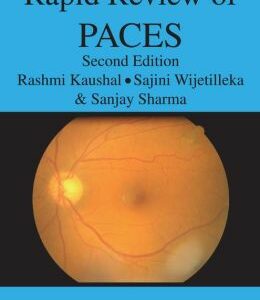Subtotal: $31.00
Ophthalmology Books, Neuro-Ophthalmology
Basic and Clinical Science Course, Section 05: Neuro-Ophthalmology – Original PDF
2025-2026 Basic and Clinical Science Course, Section 05: Neuro-Ophthalmology
By AAO
$10.00
Major Revision
Section 5 of the Academy’s Basic and Clinical Science Course™ (BCSC®) provides a symptom-driven approach to diagnosing and treating major neuro-ophthalmic conditions. Accordingly, the emphasis is on the patient’s examination, both basic and extended, and the appropriate use of adjunctive studies to determine the status of the patient’s visual system.
BCSC Section 5’s major revision features improved content regarding the approach to diagnosing and managing a patient with neuro-ophthalmic disease. BCSC Section 5’s opening chapter, “Neuro-Ophthalmic Anatomy,” has been reorganized, clinical content has been updated, and online neuroimaging correlates to the anatomical illustrations have been added.
Two new features have also been added: underlined “Key Points,” which identify essential information in each chapter, and interactive online case studies in which the reader is prompted to describe the appropriate evaluation of common neuro-ophthalmic problems.
Topics that have been expanded include sagging eye syndrome (age-related distance esotropia and cyclovertical strabismus), foveal displacement syndrome, Wernicke encephalopathy, Guillain-Barré syndrome, Miller Fisher syndrome, and Parkinson disease. The overview of supranuclear (prenuclear) disorders of ocular motility, widely considered one of the most challenging topics in neuro-ophthalmology, has been restructured for a more logical flow and improved readability.
This updated edition includes 19 new videos and three new interactive activities, for a total of 51 videos (sample), and eight activities. In addition, there are three new case studies and nine online labeled anatomy images. Both print and eBook users can access the videos and activities.
Upon completion of Section 5, readers should be able to:
Explain a symptom-driven approach to the assessment of patients with common neuro-ophthalmic clinical manifestations and state an appropriate differential diagnosis
Describe a plan for the immediate management of patients with neuro-ophthalmic emergencies
Describe eye movement disorders and their anatomical relationship to the ocular motor system
Section chair: Zoë R. Williams, MD
Print: 500 pages
Major Revision
Section 5 of the Academy’s Basic and Clinical Science Course™ (BCSC®) provides a symptom-driven approach to diagnosing and treating major neuro-ophthalmic conditions. Accordingly, the emphasis is on the patient’s examination, both basic and extended, and the appropriate use of adjunctive studies to determine the status of the patient’s visual system.
BCSC Section 5’s major revision features improved content regarding the approach to diagnosing and managing a patient with neuro-ophthalmic disease. BCSC Section 5’s opening chapter, “Neuro-Ophthalmic Anatomy,” has been reorganized, clinical content has been updated, and online neuroimaging correlates to the anatomical illustrations have been added.
Two new features have also been added: underlined “Key Points,” which identify essential information in each chapter, and interactive online case studies in which the reader is prompted to describe the appropriate evaluation of common neuro-ophthalmic problems.
Topics that have been expanded include sagging eye syndrome (age-related distance esotropia and cyclovertical strabismus), foveal displacement syndrome, Wernicke encephalopathy, Guillain-Barré syndrome, Miller Fisher syndrome, and Parkinson disease. The overview of supranuclear (prenuclear) disorders of ocular motility, widely considered one of the most challenging topics in neuro-ophthalmology, has been restructured for a more logical flow and improved readability.
This updated edition includes 19 new videos and three new interactive activities, for a total of 51 videos (sample), and eight activities. In addition, there are three new case studies and nine online labeled anatomy images. Both print and eBook users can access the videos and activities.
Upon completion of Section 5, readers should be able to:
- Explain a symptom-driven approach to the assessment of patients with common neuro-ophthalmic clinical manifestations and state an appropriate differential diagnosis
- Describe a plan for the immediate management of patients with neuro-ophthalmic emergencies
- Describe eye movement disorders and their anatomical relationship to the ocular motor system
Section chair: Zoë R. Williams, MD
Print: 500 pages

![[Original PDF] Retina: Expert Consult Premium Edition, 3-Volume Set, 5th Edition](https://ophthalmologyebooks.store/wp-content/uploads/2022/12/9781455707379-260x300.jpg) [Original PDF] Retina: Expert Consult Premium Edition, 3-Volume Set, 5th Edition
[Original PDF] Retina: Expert Consult Premium Edition, 3-Volume Set, 5th Edition 
![[Original PDF] Pediatric Ophthalmology and Strabismus, 4th Edition](https://ophthalmologyebooks.store/wp-content/uploads/2022/12/9781455737819.jpg)


